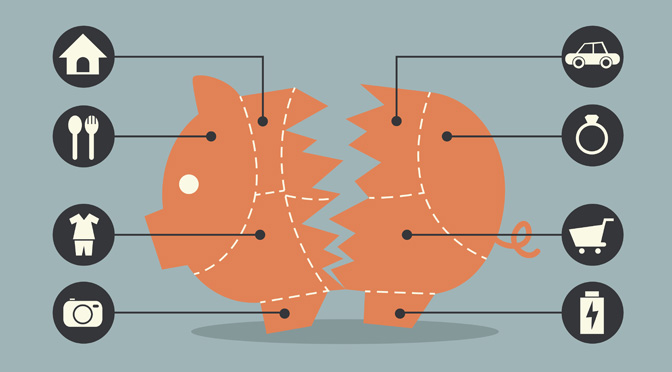A budget is your most powerful financial tool…you just have to know how to use it. A Gallop Poll conducted over the Summer of 2013, found that only 32% of Americans actually have a personal budget. Where do you fall in this group? With a budget to help guide your spending, you will never be caught off guard by another expense. Let’s get started!
Track Your Spending
It is essential to know how much money is coming in, so you know how much you can spend. And if you are looking to save some of the excess for future goals, vacations, remodels, or even for retirement, you need to technically turn a profit each and every year.
Track Your Expenses
One of the keys to gaining control of your finances is knowing exactly where you spend your money. Start out by grouping your purchases and bills into “spending categories,” being as specific or general as you’d like. Just to start:
- home (mortgage, rent, maintenance, improvements)
- car (insurance, gas, repairs)
- food (groceries and dining out)
- utilities (gas, electric, water, cable, internet, phone)
- medical (insurance, copays, and prescriptions)
- personal care
- other
As you develop the routine of tracking all your expenses, you may discover some pretty surprising spending habits. For example, you might not have realized you were blindly spending hundreds at the grocery store, or how much those Starbucks stops are really costing you each week.
Building Your Budget
Now we get to start playing with numbers so we can find out what we can change and what we have to leave alone. You can print off our printable version use the budget template in an Excel worksheet, or another budgeting device of your choice. 
- Start by filling in the monthly budget amount for all fixed expenses. Fixed expenses are those that don’t vary month-to-month much like your mortgage or rent.
- Next fill out the rest of your monthly budget’s projected costs. Look through past receipts for an average if needed, but give your best guess for now. These numbers can be amended as we progress each month.
- Add up your totals. Write this number into the “Total Expenses” box.
- Now subtract your total expenses from your monthly income. This number is very important because it tells you if you are living within your means or spending more than you make.
Evaluating your Budget
If your income is more than your total expenses – that’s awesome! You have some room to save for extras, and can work on decreasing expenses without the stress. However, if your income is less than what you are spending, it’s time to make adjustments. Go back through all your monthly expenses and see what you can reduce or cut out completely.
>>Read The Amazing Debt Consolidation Show
Variable expenses are much easier to start with, although a fixed expense like cable can be eliminated entirely. Erase and change out amounts as needed, and keep adding up your columns until your current income covers everything you spend. You should not move on to the next step until you reach a positive balance.
And there you have it…you’re budgeting!




